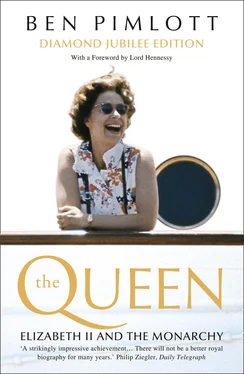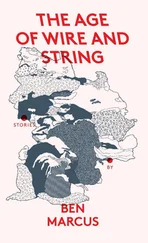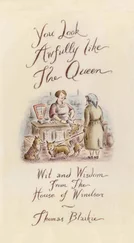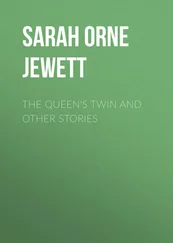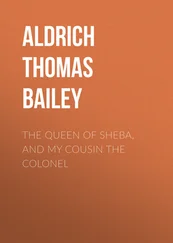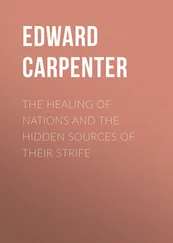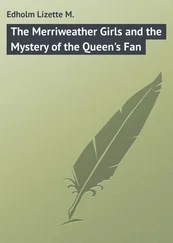As in South Africa in 1947, much of the tour was spent cooped up in a special train. The mood in the royal car varied. To relieve the monotony as they travelled into every province of the dominion, Philip developed a line in practical jokes. On one occasion he left a booby-trapped tin of nuts for his wife to open, on another he chased her down the corridor wearing a set of joke false teeth. 20At other times, tempers frayed. One member of the party remembers the Duke loudly denouncing the Heiress Presumptive as a ‘bloody fool’ in the breakfast room. 21Meanwhile, as they chugged across the vast open spaces, from the industrial lowlands of St Lawrence to the west coast, the nation’s enthusiasm – dormant at first – grew into an extraordinary excitement, focusing on the Governor-General’s train. People travelled colossal distances to gather at each stop. There were vivid incidents. Dean particularly remembered the arrival of the royal train at a small settlement deep in the Rockies, late at night in falling snow. As the couple dismounted, they were greeted by the town band and the entire population singing ‘The Loveliest Night of the Year’. 22
The high point was the hastily-added pop-over. On October 31st, they flew to Washington, where – to ensure a fitting welcome – President Truman had ordered that all Federal employees should be given time off. 23What guaranteed the success of the visit was partly the Canadian preamble, which gave the American press time to get used to the idea; partly the brevity of the trip, which gave no time for boredom; and partly that Truman decided to make it the climactic celebration of his own presidency. ‘He fell in love with her’, according to Charteris. 24The British ambassador, Sir Oliver Franks, wrote to the King that when the President appeared with Princess Elizabeth in public he conveyed ‘the impression of a very proud uncle presenting his favourite niece to his friends’. 25As Federal workers lined the streets to cheer, the President behaved as if the Princess and her husband had been responsible for some magnificent achievement. ‘We have many distinguished visitors here in this city,’ he declared in a speech in the Rose Garden, ‘but never before have we had such a wonderful couple, that so completely captured the hearts of all of us.’ 26The Washington papers wrote of ‘little Lilibet’ – recently made familiar to the American public through the pages of the Ladies’ Home Journal – who had ‘suddenly matured into the lovely young mother who one day is to be the ruling Queen of England’. 27At a big British embassy reception, the Princess and the Duke had to shake the hands of 1,500 guests.
There were matters of protocol. One, which caused a flurry of diplomatic telegrams, was the question of where the Princess should return the President’s hospitality. As the pop-over took place during a tour of Canada, she came to the United States not as future Queen of England but as future Queen of Canada, and consequently was required to entertain President Truman at the Canadian, not the British, embassy. 28
Afterwards, there was the question of thank-you letters. When the royal couple had returned to Canada, Philip wrote to Mrs Truman – as one consort to another – thanking her for her kindness, and describing his ‘rather blurred memory of our rush round Washington’. It was the job of the Princess to write to the President. She did so after talking to her father on the telephone. ‘He sounded much better,’ she wrote, hopefully. 29Across the Atlantic, the King was shown glowing extracts from the Washington Evening Star , and read the famous remark of Harry Truman: ‘When I was little boy, I read about a fairy princess, and there she is.’ 30
IN MID-NOVEMBER, the Princess and Duke returned to England, and to a new political landscape. A few years earlier, Labour had seemed so firmly entrenched that many people believed it would retain office for a generation. The 1950 election, however, had cut its majority to a handful. In the general election of October 1951, a tired Labour Government – depleted by retirements and resignations – faced a re-invigorated Conservative Party campaigning for a bigger conflagration of controls. The result was tight. Labour polled more votes, but the Tories obtained a small working majority. At seventy-seven, Winston Churchill was called to the Palace and asked by the convalescing King to form the first purely Conservative Government since Baldwin left office in 1929. The Monarch was not sorry. Although Attlee had treated him with civility and respect, the King and Queen made little secret – in private – of their High Tory opinions. 31During the war the King had come to depend personally on Churchill, whose exaggerated shows of deference he found reassuring and flattering, and he welcomed the return of a Prime Minister who took an almost child-like pleasure in the pageantry and show of Monarchy.
Elizabeth and Philip did not have long, however, to adjust to the change. Following the cancellation of the tour of the King and Queen, arrangements had been put in train for the Princess and her husband to undertake it instead – including, in their itinerary, a few days in East Africa en route . There were two reasons for such an excursion. The Kenyan colonial government, which had given the Princess and Duke a farm, Sagana Lodge, as a wedding present, had been keenly asking for a royal visit. Furthermore, such a pause in the journey gave an excuse for not stopping in Egypt, currently in the throes of a political crisis. ‘Going to Kenya is a good way of skipping the Mediterranean,’ the King pencilled in a tremulous note to his private secretary. 32The intention was to make the Kenya leg of the journey largely a holiday, before they went on from Mombasa, aboard HMS Gothic , to Ceylon.
The Kenyan settler community was delighted at the news. The East African Standard spoke for the colony when it welcomed the visit of two young people whose charm, devotion to duty and ‘personal example of homemaking family life’ had endeared them to the Commonwealth: it hoped that they would enjoy what Kenya had to offer in terms of fishing, riding, shooting and travelling on safari. As with the South African tour, the fiction was preserved that the royal visit – intended to provide symbolic reassurance to the white settlers in increasingly uncertain times – was purely recreational. 33The couple’s example of homemaking did not include bringing their children with them. Though they expected to be away for six months, longer even than the Yorks’ 1927 trip, the question did not arise. ‘It was absolutely taken for granted that they would be left behind,’ says an ex-courtier. ‘It was simply what one did in those days.’ 34
As soon as he knew they were coming, the Governor of Kenya, Sir Philip Mitchell, made an imaginative suggestion. ‘. . . [P]lease try to get them here so that their visit includes the period of three days on either side of the full moon,’ he wrote to the Colonial Office on October 13th. ‘In that case I would reserve Treetops for them for a night, that is the hotel in the branches of a giant fig tree overlooking a salt lick about ten miles from their Lodge in the Aberdares . . . I am sure that H.R.H. would enjoy it enormously; it really is something not to be missed and it does require, for its full enjoyment, as much moonlight as possible.’ The moonlight was for viewing the big game that came to the water-hole under the tree. 35
In his Christmas broadcast, the King expressed his pleasure that ‘our daughter, Princess Elizabeth’ and her husband would be taking his and the Queen’s place on the tour. It was the first and last time that he ever referred to his heir on such an occasion by name. 36After recording the programme – piece by piece, as his strength allowed – the King spent Christmas with his family in Norfolk. ‘I am progressing well since my operation, I am glad to say’, he wrote to General Eisenhower from Sandringham on January 7th. 37On January 30th, he returned to London for a visit to the American musical South Pacific in Drury Lane. The following day he accompanied his elder daughter and his son-in-law to London airport and said good-bye to them on the tarmac as they boarded their plane for Nairobi.
Читать дальше
